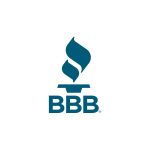Everyone understands the importance of saving for retirement. In fact, according to a recent survey, most Americans hope to retire by the age of 67. Unfortunately, only about half of those individuals have a plan in place to do so. If you are considering starting a plan to retire, you might be considering a 401(k). While this process may seem confusing or overwhelming at first, Care Financial is here to help you navigate it and get closer to the end goal of retirement.
A 401(k) plan is a tax-advantaged retirement account offered by all employers in the United States. This account allows employees to save for their retirement by contributing a portion of their income to the account over time, which is done through payroll every period. Employees are able to choose the amount the percentage of their salary or a fixed amount up to a limit that they are deciding to contribute towards retirement. A 401(k) is tax-advantaged, meaning your taxed income will be lowered since the contributions are pre-taxed. Even the funds in your 401(k) account grow tax-free!
Some employers contribute to an employee’s 401(k) plan by offering an employer match. For instance, an employer may offer to match the contributions of the employee dollar to dollar for the first 5% of the employee’s salary. These employer contributions usually come with strings attached, most commonly a vesting schedule. Vesting means the employer contributions and earnings on those contributions are not the property of the employee until certain conditions are met, which may include anything. Most of the time the conditions are simply that the employee must be employed for a certain time period before the contributions and earnings are fully the employee’s property.
In 2021, the maximum amount an employee may legally contribute to a 401(k) is $19,500. If employees are age 50 or older, they may contribute a “catch-up” contribution of $6,500, bringing their contribution limit to $26,000.
There are limits to both traditional 401(k)s and Roth IRAs, even if you decide to split your contributions between the two. Even if you change employers during the year, this limit still applies. 401(k) contributions may also not exceed an employee’s income, even if the employee makes less than $19,500 annually.
Depending on your age and several other factors, there may be taxes or fees to pay when you decide to withdraw money from your 401(k). If you withdraw money from a 401(k) before age 59.5, the money is subject to a 20% federal income tax and 10% penalty from the IRS. For instance, if you decide to withdraw $5,000, your 401(k) plan administrator will withhold $1,000 and you will owe the IRS $500 when filing taxes, leaving you with only $3,500.
However, there are a few special cases that allow individuals to avoid the 10% penalty:
There are a few other unique situations that allow individuals to avoid the 10% penalty. It is best to speak to a financial advisor if you are thinking about withdrawing money from your 401(k) account to decide if it is the best fit for you or to see if you qualify as one of the unique cases to avoid the penalty of withdrawal.
Once you reach 59.5 years of age, you are able to access the money inside your 401(k) account without facing a penalty. Beginning at age 72, you must start withdrawing required minimum distributions, known as RMDs, from their 401(k) account. However, if you are still working at 72, this is not required.

Mobile, AL
5920 Grelot Rd., Bldg G., Ste B
Mobile, AL 36609
Fairhope, AL
19973 Hwy 181 Suite A
Fairhope, AL 36532
